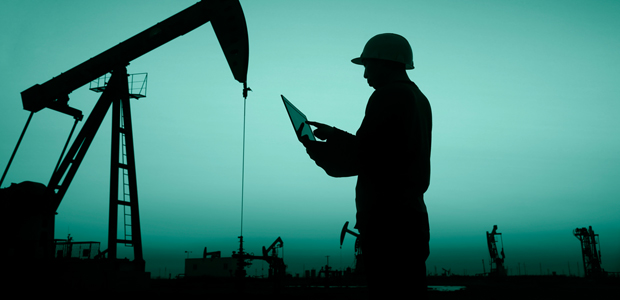
Pumping
Demanding More From Production Technology Means Identifying Results
By Shiva Rajagopalan
WEST LAKE VILLAGE, CA.–Oil and natural gas producers often are promised riches from modern technology, but how many of those predictions come true and actually make a significant impact on a company’s bottom line?
How many of the strategic plans and road maps that claim to plot an endless path to efficiency and cost savings deliver real results?
If the observable benefits seem more nebulous within the oil and gas operations space, it is not because the technology cannot make real impacts today. However, production leaders simply need to know what to demand.
Comparison And Contrast
Ten years ago, I was working out of a trailer in Bakersfield, Ca., surrounded by 10,000 oil wells. Bakersfield oil is heavy and expensive to refine, but I loved it–not so much because of its gravity, but because of my background as a mechanical engineer and the joy I derived from working with tangible things. Bakersfield’s heavy oil was as tangible as it gets–and I considered it beautiful.
Like everyone in the oil field, I never had much time on my hands, but my voracious curiosity–a common trait among engineers–drove me to wonder about other oil fields. I assumed that my field, with its exquisite oil, was distinct. Innocent curiosity about other oil fields, their similarities and differences from Bakersfield, launched me on a journey.
Exploring different oil fields offers an excellent lesson for anyone willing to learn. The Permian Basin has its own sort of splendid oil. The Rocky Mountain region offers its own variety of fascinating pursuits and puzzles. Ultimately, the truth about oil fields is that there’s no place like Bakersfield. But then, such singularity is hardly exceptional. Every oil field is different, as is every product, crew and worker. Each possesses unique characteristics that call for a distinct approach.
Although broad-based exploration certainly highlights the stark differences between various oil fields, it also helps to demonstrate the underlying characteristics they all share in common: the features that make an oil field an oil field. One of the most striking, perhaps, is the unavoidable reality that all wells deplete. That means the race is on to meet production targets while keeping a keen eye on profitability.
With this in mind, it may be easy to conclude that operating expense and production targets go hand-in-hand. The field, more specifically the lease operator, must be empowered with both.
Tangible Results
Giving lease operators this type of visibility may seem straightforward, but it has profound implications for oil and gas companies’ survival and success.
Ultimately, operators must present their software as service (SaaS) venders with the two very specific demands: They must require dynamic routing and they need to capture accurate run tickets through text and image recognition.
By utilizing artificial intelligence, dynamic routing puts an oil and gas producer in a proactive stance that allows it to focus on highly productive assets that require attention, rather than devoting roughly equal time to all tasks, regardless of urgency. For instance, if a lease operator is servicing 15 wells and 12 are running smoothly but three are malfunctioning, prioritizing the poorly functioning wells will help maximize overall production.
The process primarily relies on algorithms that use cascading logic about business priorities. The technique then generates recommendations for improving and optimizing field level activities. Management by exception, in conjunction with field data gathering software, offers tremendous opportunities for reducing costs and increasing productivity not someday, but right away.
As for using text and image recognition to capture accurate run tickets, consider the inefficiencies that surround the traditional system. Simple data tracking mistakes can wreak havoc, but it is time-consuming to triple-check. A precise view of oil and gas production is essential and possible through connecting field workers with managers by utilizing the benefits of an AI system. This method makes it entirely possible to maintain 99 percent run ticket accuracy, and ultimately can produce yearly production growth.
Using leading automation systems, run tickets can be uploaded, translated and filed in the system with one click. Pumpers simply photograph the ticket and then advanced character recognition software interprets the handwriting–cursive and block script–on low-resolution images and even can interpret oil-stained or coffee-splattered documents. Each ticket learns from the first and applies that knowledge to the second, then the third and every instance thereafter. Call it AI, machine learning or deep learning, the upshot is a neural network that continues to improve itself with time.
Ambitious oil and gas executives already have begun demanding more results from their production technology. Unsatisfied with endless talk of future potential and hype-filled graphic presentations, they are insisting on acquiring the most advanced AI-driven automation systems for their operations. These savvy executives are saving millions of dollars for their companies, carrying their organizations into the future with tangible results that are beautiful to behold.

Shiva Rajagopalan is president and chief executive officer of Seven Lakes Technologies, a niche analytics and technology solutions firm for the upstream oil and gas sector. He founded Seven Lakes in 2009 and has overseen the development of numerous innovative products. Previously, as a data architect at Chevron Corporation, Rajagopalan created solutions used to solve a broad range of oil field challenges, resulting in multimillion dollar cost savings. Rajagopalan holds a B.S. in mechanical engineering from the Indian Institute of Technology, Bombay and has received four Chevron contractor recognition awards for professional and technical excellence.
For other great articles about exploration, drilling, completions and production, subscribe to The American Oil & Gas Reporter and bookmark www.aogr.com.






